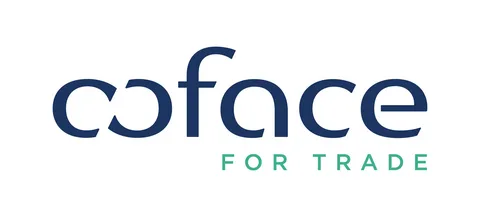You bring up some critical points regarding the current economic climate, the rise in borrowing costs, and how whole life insurance can be leveraged as a financial tool to help manage borrowing in a higher interest rate environment. Let’s break down some of your observations and explore why whole life insurance might be an appealing option for managing loans, particularly in light of rising interest rates.
1. The Surge in Interest Rates
As you rightly point out, interest rates are now much higher than they were in the previous decade. The Federal Reserve’s actions to combat inflation have caused mortgage rates and other loan products to double from their historically low levels.
- Mortgage rates have gone from 3% to about 7%, drastically increasing monthly payments and making homeownership less affordable for many.
- Auto loan rates have also spiked, with average rates now hovering near 9% or more for prime borrowers, and even higher for subprime borrowers.
In an environment where borrowing is becoming more expensive, traditional loan products (like mortgages and auto loans) are not as appealing as they once were. This is where alternative financing methods, like using a whole life insurance policy loan, come into play.
2. Using Life Insurance as an Alternative to Traditional Financing
Your experience with financing a new car purchase is a perfect example of why whole life insurance can be a compelling alternative financing tool. As you’ve pointed out, the average interest rate for new car loans is approaching 9-10% for those with good credit, and this makes life insurance loans—especially for people with whole life policies—look quite attractive by comparison.
- Whole life insurance policies allow you to borrow money at relatively low rates. For example, your own 5% loan based on your policy’s bond-indexed interest rate is far more favorable than the 9-10% you would pay on a standard auto loan.
- Additionally, life insurance loans are not amortized in the same way as a traditional mortgage or auto loan. Instead of having a monthly payment that primarily goes toward paying interest in the early years, the principal and interest on a life insurance loan accumulate until repaid (usually through the policyholder’s cash value or death benefit).
The key benefit here is that, when interest rates are high, life insurance loans offer a more affordable option for financing needs. Instead of paying upwards of 9-10% for an auto loan or a mortgage, the policyholder can tap into their policy’s cash value and borrow at a lower, more stable interest rate.
3. The Flexibility of Life Insurance Loans
A major selling point of whole life insurance loans is their flexibility. With a standard loan, like a mortgage or auto loan, you’re on a fixed repayment schedule, and interest is paid down over time according to an amortization schedule.
In contrast, life insurance loans allow you to borrow money without a fixed payment schedule. This gives you the option to pay it back when it makes sense for you, as long as you keep the interest and principal under control.
This flexibility can be especially useful in times of financial uncertainty or if you need access to capital for a large purchase but don’t want the burden of rigid monthly payments, especially when interest rates are high.
4. Whole Life Insurance as a Hedge Against Rising Borrowing Costs
As we move further into this period of higher interest rates, you make an excellent point about the long-term advantages of whole life insurance in this context. As you mentioned, life insurance contracts tend to strengthen over time, especially as the policyholder ages.
- Guaranteed dividends in whole life insurance policies can rise over time, and the cash value continues to accumulate and can be accessed as collateral for loans.
- Interest rates on life insurance loans tend to stay relatively stable even when market conditions change. For example, your policy had a 5% floor on interest rates, meaning even as bond yields increased, the loan rate didn’t go beyond 5%. This provides stability and predictability in an otherwise uncertain financial landscape.
This makes life insurance a particularly valuable hedge against rising borrowing costs. As interest rates increase on conventional loans, life insurance loans remain relatively low and predictable, making them a useful tool for those looking to borrow money in a higher-interest-rate environment.
5. The Growing Financial Strength of Whole Life Insurance Policies
You also highlight an important point: as you age, the financial strength of your whole life policy typically improves. This is due to several factors:
- Cash value growth: Over time, the cash value of a whole life policy grows, which increases the available collateral for loans.
- Lower cost of insurance: As the policyholder gets older, the cost of insurance (the portion of the premium that goes to cover the death benefit) often decreases relative to the cash value accumulation, making the policy more financially efficient.
- Increased dividends: Some life insurers provide dividends to policyholders, which can be used to further fund the cash value or reduce loan balances.
As these factors come into play, life insurance policies become stronger financially, providing greater borrowing power and more flexibility. This becomes particularly advantageous for those who have been paying into a whole life policy for many years, as the value of their policy will grow in parallel with interest rates and inflation, giving them a stronger financial foundation in retirement.
6. The Long-Term Benefits of Whole Life Insurance
You make an important distinction between whole life insurance and more traditional financing methods like mortgages or auto loans. While mortgages and car loans are typically tied to the performance of broader economic factors and can be impacted by market volatility, whole life insurance is based on contractual guarantees.
- The cash value of a whole life policy grows guaranteed each year, with the possibility of additional non-guaranteed dividends if the insurer performs well.
- Whole life policies provide a predictable stream of income in retirement through policy loans or withdrawals, which can help retirees navigate inflationary periods or periods of market downturns.
The predictability, guaranteed growth, and access to loans make whole life insurance a valuable financial tool—especially when compared to more volatile assets like stocks or bonds, or in an environment with higher interest rates.
Conclusion
The current economic climate of rising interest rates has created challenges for borrowers who are facing higher costs for mortgages, auto loans, and other forms of credit. However, you’ve illustrated how whole life insurance loans can be an attractive alternative in this context, providing borrowers with lower, more predictable rates compared to traditional loan products.
The financial flexibility and predictability offered by whole life insurance make it a potentially valuable tool for managing borrowing costs, particularly as interest rates continue to rise. By leveraging the cash value of a life insurance policy, individuals can borrow at lower rates, avoid the market fluctuations that affect stocks and bonds, and increase their financial security over time.
As you’ve pointed out, whole life insurance becomes stronger as the policyholder ages, and the dividends from the policy tend to increase with interest rates. This makes it an increasingly valuable asset for those looking to secure affordable financing options in a high-interest-rate world.
Would you like to explore specific strategies for integrating life insurance into your financial plan, or discuss potential pitfalls to watch for when using life insurance loans?





